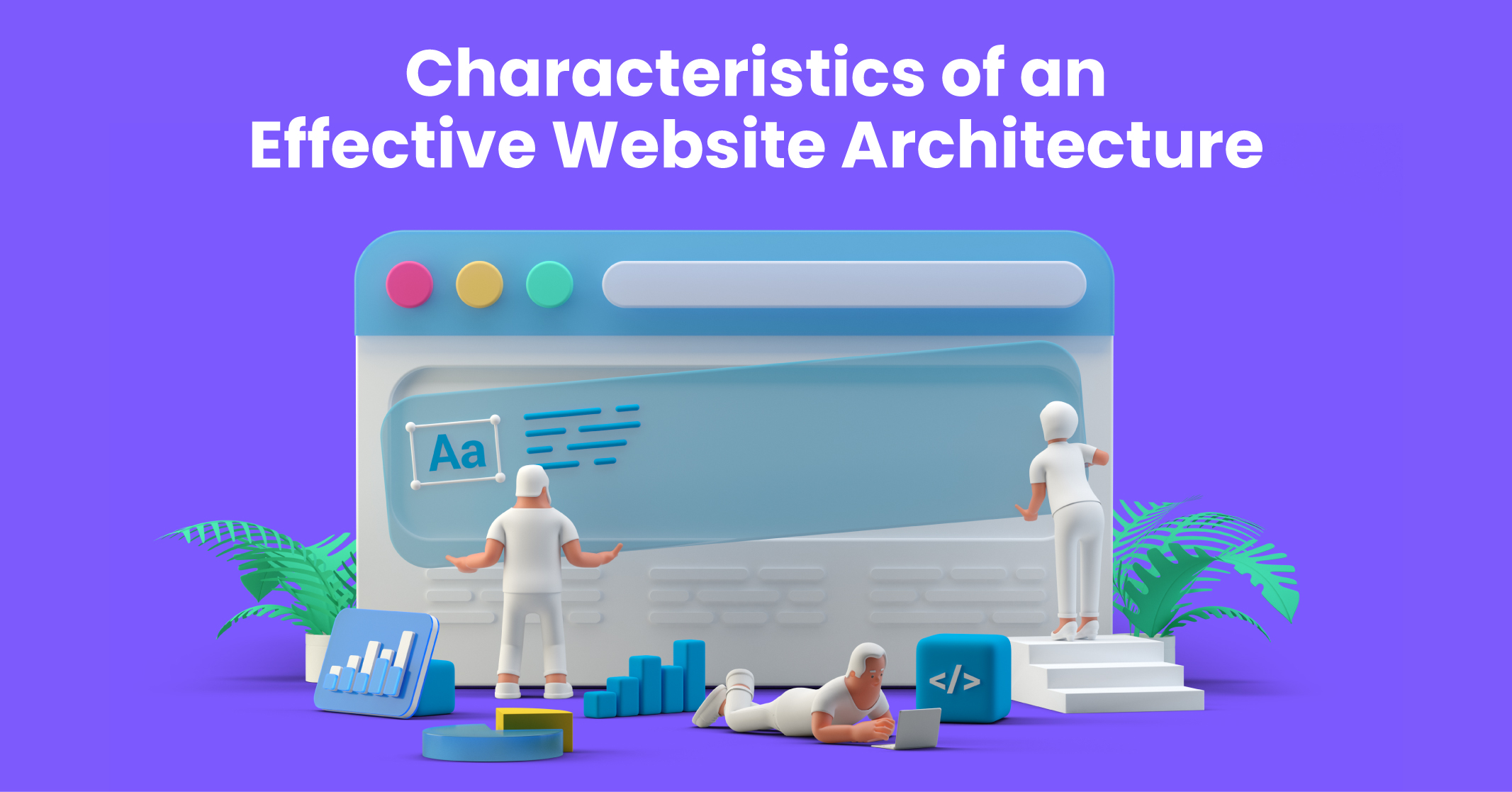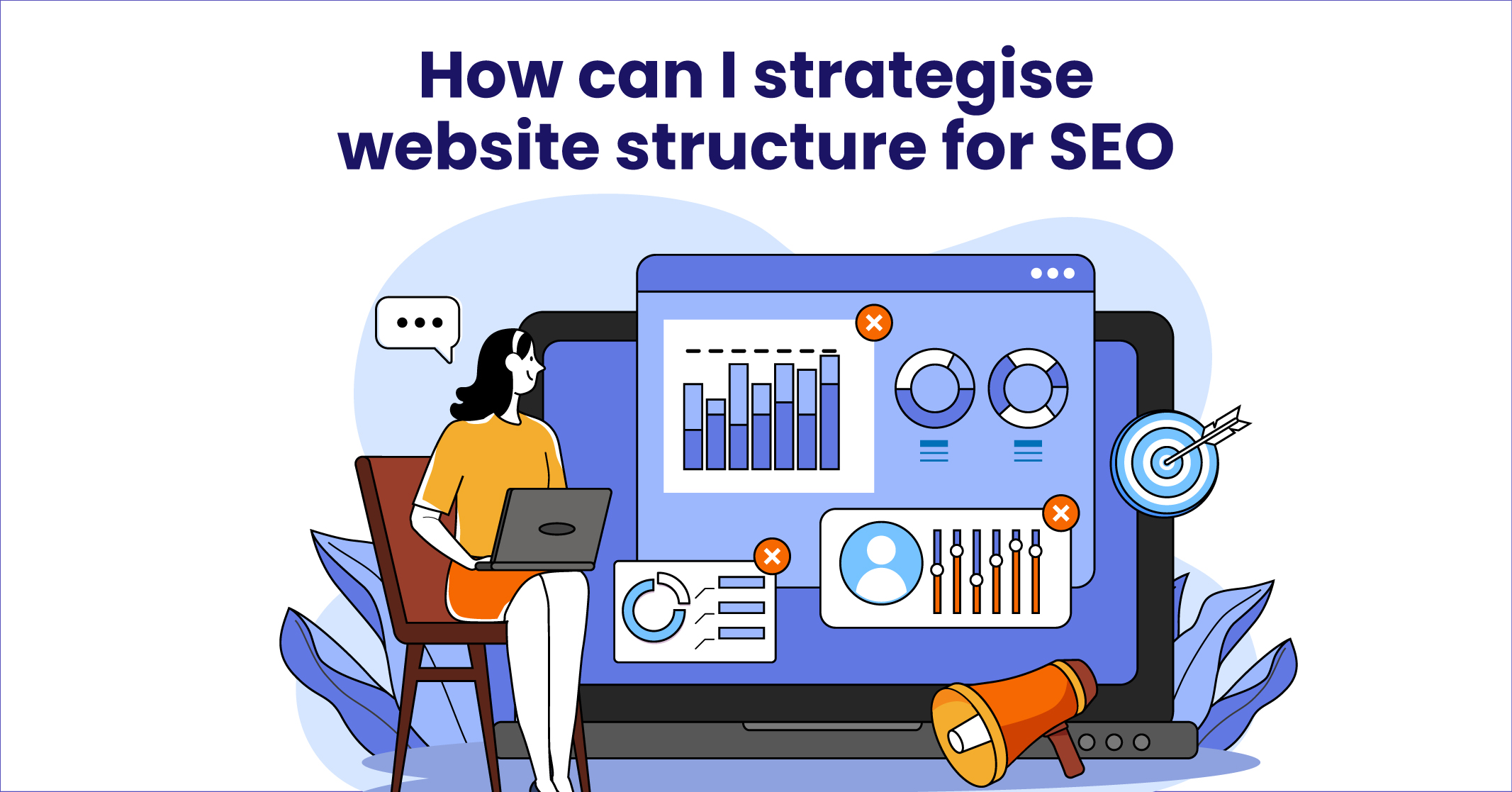Click Here - Free 30-Minute Strategy Session
Be quick! FREE spots are almost gone for this Month. Free Quote
Creating an SEO-friendly Website Architecture: A Guide
Blog / Creating an SEO-friendly Website Architecture: A Guide 
Creating an SEO-friendly Website Architecture: A Guide
Understanding Website Architecture
Website architecture designates the hierarchy of pages on a website and how they interconnect. It is crucial for SEO because it serves several important purposes:
- It enables search engines to discover and index all pages on your site, improving its visibility.
- It distributes authority across your webpages via internal links, which can boost your site’s credibility.
- It helps visitors navigate your site and locate relevant content, improving their user experience.
The internal links on a website create an SEO site structure by linking from one page to another, providing Google and readers with additional context about each page and offering easy access to linked content.
Click Here – Free 30-Minute Strategy Session
Be quick! FREE spots are almost gone for this Month
Free Quote
To ensure that your website architecture design is optimal for both users and search engines, follow these guidelines:
- Develop a clear and straightforward site hierarchy, with your homepage at the top, followed by categories, subcategories and pages.
- Organise your website into sections or silos based on topics, using broad categories and subcategories. This will make it easier for visitors to locate the information they need and improve your site’s crawl ability.
- Use breadcrumb navigation to make it easy for visitors to retrace their steps and return to the previous page or section.
- Use internal links to link pages that have related content, prioritising links to your most important pages.
- Ensure that your site has a simple URL structure that uses descriptive, keyword-rich URLs for each page.
- Use header tags (H1, H2, H3) to structure your content hierarchically and help search engines understand the significance of each section.
By following these tips, you can create an effective website architecture for SEO that benefits both your visitors and search engine rankings and improves the overall performance of your website.
The Importance of Website Architecture for Your Online Presence
A well-designed website architecture is essential for improving both search engine rankings and user experience. Here’s why:
- Good site architecture helps Google find and index all your pages, making it easier for your site to appear in search results.
- A clear structure with logical internal links spreads authority throughout your webpages, helping Google understand the purpose of each page.
- A clear website structure also helps visitors easily find the content they’re looking for, improving their experience and increasing the chance of them becoming a customer.
To optimise your website’s structure for SEO, keep the following tips in mind:
- Plan a clear hierarchy of pages and link them together logically to provide context for Google.
- Use internal links to help Google discover and rank pages and make sure you link to important pages more frequently.
- Prioritise easy navigation for users to help them find what they’re looking for quickly and efficiently.
- Consider using pagination over infinite scroll for better navigation control and to help users remember where products are located.
When it comes to designing the best website structure for SEO, remember that it’s all about providing clear context for both search engines and users. A well-organised site with clear internal linking and easy navigation will improve your chances of ranking high in search results and keep visitors engaged with your content.

Characteristics of an Effective Website Architecture
To ensure SEO page structure optimisation, consider the following:
- Use a flat website architecture, where topically related content is grouped together in a logical hierarchy and your most important pages are highlighted. This ensures that users can access your content in as few clicks as possible.
- Keep the click depth of your website to fewer than four clicks. This makes it easier for users to find the content they want and helps search engines access and rank your pages more efficiently.
- Ensure that each important page is a part of the website architecture, with at least one incoming link from another page on the site. Pages without internal links are called orphan pages and search engines may struggle to access and rank them.
- Create topic clusters to group related webpages under relevant categories. This helps to create a clean site architecture and avoid orphan pages.
By following these best practices for website architecture, you can improve your site’s search engine rankings and user experience.
Creating an Optimised Website Architecture for Better SEO
Designing the structure of your website is crucial to ensure a user-friendly experience and improve your search engine optimisation (SEO) efforts. To help you create the best website architecture design for SEO, here are some tips to follow:
- Use Internal Linking Strategically: Internal linking helps distribute link equity across your website and makes it easier for search engines to crawl and index your pages. Use relevant anchor text to link to other pages on your website.
- Create a Flat Site Architecture: A flat site architecture means that every page on your website should be accessible from the homepage within a few clicks. This makes it easier for users and search engines to navigate your site.
- Create an Easy-to-Follow Navigation Menu: A clear and concise navigation menu helps users find the information they need quickly and easily. Use simple and descriptive labels for your menu items.
- Optimise Your Site’s URLs: Use descriptive and keyword-rich URLs for your website pages to help search engines understand the content of your pages.
- Use Breadcrumbs: Breadcrumbs are a navigation aid that shows users where they are on your website and how they got there. This improves the user experience and can also improve your SEO efforts.
- Use HTML and XML Sitemaps: Sitemaps help search engines crawl and index your website more efficiently. An HTML sitemap is a page that lists all the pages on your website, while an XML sitemap is a file that tells search engines where to find your website pages.
By following these website architecture SEO tips, you can create the best website structure for SEO and improve your website’s user experience at the same time. Remember, a well-structured website can help boost your SEO page structure optimisation and rankings and ultimately drive more traffic to your site.
Frequently Asked Questions
What is the best website architecture for SEO?
The best website architecture for SEO is flat site architecture. This means organising your website into categories and subcategories that are easy to navigate. Flat site architecture allows search engines to easily crawl and index your site, which can improve your site’s visibility in search results.
How does website architecture impact SEO?
Site architecture is important for SEO because it determines how search engines crawl and index your site. A well-organised site with a clear hierarchy and easy-to-use navigation can help search engines understand the content on your site and rank it more effectively. Good site architecture can also improve user experience, which can lead to increased traffic and engagement.

How can I strategise website structure for SEO?
To plan a website structure for SEO, start by organising your content into categories and subcategories that make sense for your business or organisation. Use keyword research to identify the most important topics and phrases for your site and create pages and subpages that target those keywords. Keep your site architecture flat and avoid creating too many levels of hierarchy. Use internal linking to connect related pages and make it easy for users and search engines to navigate your site. Finally, make sure your site’s URLs are descriptive and easy to understand, and create XML and HTML sitemaps to help search engines find and index your content.






LEAVE A REPLY